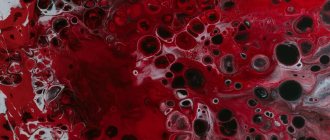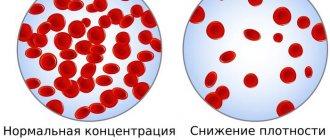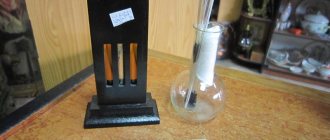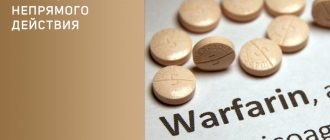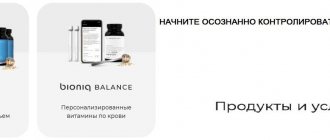An important indicator of a biochemical blood test is creatinine. This amino acid is formed in muscles after the non-enzymatic breakdown of creatine, a substance involved in the energy metabolism of the muscular system. The concentration of creatinine in the blood, with proper functioning of the muscular system and kidneys, is always maintained within certain values.
Deviations from the norm indicate a violation of the process of elimination from the body. The problem arises with kidney pathologies and impaired energy metabolism in the muscles. Understanding what creatinine is in the blood, the doctor can prescribe additional tests to make an accurate diagnosis in order to carry out the correct treatment.
What is creatinine?
Creatinine is one of the metabolites of biochemical reactions of amino acid-protein metabolism in the body. The formation of this compound occurs constantly and is associated with metabolic processes in muscle tissue. Since muscles constitute one of the main masses of the human body, and contraction requires a constant energy substrate, powerful energy carriers must be embedded in their structure. This is necessary in order to meet emergency energy needs.
The main donor of ATP for muscle tissue is creatine phosphate - the phosphorylated essential amino acid creatine. After synthesis in the liver, it enters the muscles, where it is dephosphorylated by the enzyme creatine phosphokinase. The result of these processes is the formation of energy and creatinine. ATP is used by the muscles to meet energy needs, and the kidneys excrete creatinine in the urine after filtration.
Creatinine, as the final product of breakdown reactions, is not consumed in the body for other metabolic processes. This is a compound that is harmful to tissues and should be eliminated from the body as much as possible. Violation of creatinine metabolism can occur at the stages of its intake, metabolism and excretion!
C-reactive protein test
C-reactive protein ( CRP ) is a very sensitive element of a blood test that quickly responds to even the slightest damage to body tissue. The presence of C-reactive protein in the blood is a harbinger of inflammation, injury, and the penetration of bacteria, fungi, and parasites into the body.
CRP more accurately shows the inflammatory process in the body than ESR (erythrocyte sedimentation rate). At the same time, C-reactive protein quickly appears and disappears - faster than the ESR changes.
Due to the ability of C-reactive protein to appear in the blood at the very peak of the disease, it is also called “acute phase protein.”
As the disease enters the chronic phase, C-reactive protein decreases in the blood, and when the process worsens, it increases again.
C-reactive protein is normal
C-reactive protein is produced by liver cells and is found in minimal amounts in the blood serum. The content of CRP in blood serum does not depend on hormones, pregnancy, gender, or age.
The norm of C-reactive protein in adults and children is the same - less than 5 mg/l (or 0.5 mg/dl).
A blood test for C-reactive protein is taken from a vein in the morning, on an empty stomach.
1 Blood test for uric acid levels
2 blood test for antinuclear antibodies
3 Blood test for rheumatoid factor
Causes of increased C-reactive protein
C-reactive protein may be elevated in the presence of the following diseases:
- rheumatism;
- acute bacterial, fungal, parasitic and viral infections;
- gastrointestinal diseases;
- focal infections (for example, chronic tonsillitis);
- sepsis;
- burns;
- postoperative complications;
- myocardial infarction;
- bronchial asthma with inflammation of the respiratory system;
- complicated acute pancreatitis;
- meningitis;
- tuberculosis;
- tumors with metastases;
- some autoimmune diseases (rheumatoid arthritis, systemic vasculitis, etc.).
With the slightest inflammation, in the first 6-8 hours the concentration of C-reactive protein in the blood increases tenfold. There is a direct relationship between the severity of the disease and changes in CRP levels. Those. The higher the concentration of C-reactive protein, the stronger the inflammatory process develops.
Therefore, changing the concentration of C-reactive protein is used to monitor and control the effectiveness of treatment of bacterial and viral infections.
Different reasons lead to different increases in C-reactive protein levels:
- The presence of chronic bacterial infections and some systemic rheumatic diseases increases C-reactive protein to 10-30 mg/l. With a viral infection (if there is no injury), the level of CRP increases slightly. Therefore, high values indicate the presence of a bacterial infection .
- If neonatal sepsis is suspected, a CRP level of 12 mg/l or more indicates the need for urgent antimicrobial therapy.
- In acute bacterial infections, exacerbation of some chronic diseases, acute myocardial infarction and after surgery, the highest level of CRP is from 40 to 100 mg/l. With proper treatment, the concentration of C-reactive protein decreases within the next few days, and if this does not happen, it is necessary to discuss other antibacterial treatment. If after 4-6 days of treatment the CRP value has not decreased, but remains the same and even increased, this indicates the occurrence of complications (pneumonia, thrombophlebitis, wound abscess, etc.). After surgery, the more severe the operation, the higher the CRP will be.
- During myocardial infarction, protein increases 18-36 hours after the onset of the disease, decreases after 18-20 days and returns to normal by 30-40 days. With angina pectoris, it remains normal.
- In a variety of tumors, elevated levels of C-reactive protein can serve as a test to assess tumor progression and disease recurrence.
- Severe general infections, burns, sepsis increase C-reactive protein to enormous values: up to 300 mg/l or more.
- With proper treatment, the level of C-reactive protein decreases already on days 6-10.
Preparation for rheumatological tests
In order for analyzes to show objective information, it is necessary to adhere to certain rules. You need to donate blood in the morning, on an empty stomach. Approximately 12 hours should pass between taking tests and eating. If you're thirsty, drink some water, but not juice, tea or coffee. It is necessary to exclude intense physical exercise and stress. You cannot smoke or drink alcohol.
The multidisciplinary clinic "MedicCity" provides diagnostics of the highest level, experienced, qualified rheumatologists and specialists in more than 30 specialties. We treat arthritis, arthrosis, vasculitis, lupus erythematosus, osteoporosis, gout, rheumatism and many other rheumatological diseases. Do not delay your visit to the doctor, contact us at the slightest symptoms. High-quality diagnosis is 90% of successful treatment!
Normal creatinine
All creatinine cannot be filtered and excreted by the kidneys. This is due to the fact that it is constantly released into the blood while the muscle tissue is viable. Blood plasma should contain a relatively stable concentration of creatinine, which may vary depending on age, muscle activity and nutrition. Therefore, there are maximum and minimum limits of normal creatinine, which take into account all these points and indicate the normal functioning of organs.
To eliminate errors in the results of a biochemical blood test based on creatinine levels, be sure to adhere to the general rules for blood sampling. The study must be carried out in the morning on an empty stomach. It is advisable to avoid strong muscle strain and overheating or hypothermia before directly drawing blood.
To illustrate the variations in creatinine standards, they are presented in table form:
| Age and gender | Small children | Pupils | Men | Women |
| Creatinine norm in µmol/l | 45-105 | 27-62 | 74-110 | 44-80 |
Creatinine norm in women
Plasma creatinine concentrations in women should be lower than in men. This is due to the physiological mechanisms of its formation, distribution and circulation in the blood.
The mechanisms of this phenomenon are as follows:
- A woman's muscle mass is less than that of a man;
- Less muscle strain;
- The activity of metabolic processes in the female body is reduced;
- Food products from the female diet contain less exogenous creatinine entering the body;
- The influence of sex hormones and pregnancy.
Creatinine norm in men
The creatinine of the male body should almost always be higher than that of women of the same age group. This is due to lifestyle characteristics and differences in the functioning of organs and systems. Age characteristics also affect the process of creatinine metabolism, both towards its increase and decrease. Recently, many men have been visiting gyms and using doping products containing creatine to increase muscle performance. This must be taken into account when assessing the creatinine norm.
Normal creatinine level in children
The concentration of creatinine in a child’s plasma largely depends on his age. The main fluctuations in this indicator are associated with growth activity and the degree of increase in muscle mass over a certain period of time. Newborns, due to the high stress that their body had to experience during childbirth, have creatinine levels the same as in adults. The same feature is typical for adolescents, which is explained by the active growth of the body. School-age children grow relatively steadily, so their creatinine levels are slightly lower than adults.
ACDC
A blood test for ACCP consists of determining the titer of antibodies to cyclic citrullinated peptide and is one of the accurate methods for confirming the diagnosis of rheumatoid arthritis. With its help, the disease can be detected several years before symptoms appear.
What does the ACDC analysis show?
Citrulline is an amino acid that is a product of the biochemical transformation of another amino acid - arginine. In a healthy person, citrulline does not take part in protein synthesis and is completely eliminated from the body.
But with rheumatoid arthritis, citrulline begins to integrate into the amino acid peptide chain of proteins in the synovial membrane and cartilage tissue of the joints. The “new” modified protein, which contains citrulline, is perceived by the immune system as “foreign” and the body begins to produce antibodies to citrulline-containing peptide (ACCP).
ACCP is a specific marker of rheumatoid arthritis, a kind of harbinger of the disease at an early stage, with high specificity. Antibodies to cyclic citrullinated peptide are detected long before the first clinical signs of rheumatoid arthritis and remain throughout the disease.
Methodology of analysis and its significance
To detect ACCP, an enzyme-linked immunosorbent assay is used. A blood test for ACCP is carried out according to the “in vitro” principle (translated from Latin - in a test tube), serum from venous blood is examined. The ACCP blood test can be ready within 24 hours (depending on the type of laboratory).
Detection of ACCP in rheumatoid arthritis may indicate a more aggressive, so-called erosive form of the disease, which is associated with more rapid resolution of joints and the development of characteristic joint deformities.
If the test result for ACCP is positive, then the prognosis for rheumatoid ACCP arthritis is considered less favorable.
1 Blood test for ACCP
2 Blood test for C-reactive protein
3 Blood test for ACCP
ACDC. Reference values
The normal range for the ACCP test is approximately 0-5 U/mL. The so-called “ ACCP norm ” may vary depending on the laboratory. The “ACCP norm” values for women and men are the same.
The so-called “ Increased ACCP ”, for example, ACCP 7 units/ml or more, indicates a high likelihood of rheumatoid arthritis. An analysis result assessed as “ ACCP negative ” reduces the likelihood of rheumatoid arthritis, although it does not completely exclude it. A rheumatologist with experience in diagnosing and treating rheumatoid arthritis should always evaluate the ACCP values and interpret them; only a rheumatologist can take into account all the nuances.
To get tested for ACCP, you need to come for examination on an empty stomach.
Indications for the purpose of analysis:
- rheumatoid arthritis;
- early synovitis;
- osteoarthritis;
- polymyalgia rheumatica;
- psoriatic arthritis;
- Raynaud's disease;
- reactive arthritis;
- sarcoidosis;
- scleroderma;
- Sjögren's syndrome;
- SLE;
- vasculitis;
- juvenile RA.
If you want to know the cost of a blood test for ACCP, please call.
Contact center specialists will tell you the price of the ACDC and explain how to prepare for the study.
Elevated creatinine levels
When assessing creatinine metabolism, most often one has to deal with an increase in the concentration of this metabolite. It is very important to correctly interpret the obtained indicators, taking into account the possibility of physiological and pathological increases, age and gender standards. The condition in which an increase in plasma creatinine is recorded is called hypercreatinemia.
Hypercreatininemia does not cause severe abnormalities in the body, since creatinine itself is low-toxic. Its harmful effects on tissue can only appear with sharp deviations from the norm in its concentration. This metabolite is more related to the consequences of various conditions and diseases, signaling their presence. Therefore, isolated hypercreatininemia causes virtually no symptoms.
It is usually combined with other pathological symptoms that may suggest the need for this study:
- Muscle pain;
- Fatigue and muscle weakness;
- Edema;
- An increase or sharp decrease in the amount of daily urine;
- Pathological changes in general urine analysis (protein, leukocytes, erythrocytes).
The pathogenesis of hypercreatinemia can be associated with any of the stages of creatinine metabolism and circulation in the body. It can be influenced by the nature of the diet, the mode of physical activity, the amount of fluid consumed, the use of medications, the anatomical features of muscle tissue and its condition, the functional abilities of the excretory system and liver.
What does elevated creatinine mean?
An increase in creatinine concentration during a biochemical blood test may indicate:
- Increased intake of creatine-containing substances into the body from the environment with increased protein nutrition;
- Excessive or very rapid increase in muscle mass;
- High loads performed by muscles;
- Destruction of muscle tissue;
- Redistribution of blood and disruption of water balance in the body;
- Impaired kidney function in neutralizing and excreting creatinine;
- Toxic effects on the body;
- Endocrine disorders that regulate metabolic processes in the body.
In some cases, one has to deal with a relative increase in creatinine levels, which does not occur due to its excess production or retention in the body. It is associated with a decrease in the volume of circulating plasma as a result of its redistribution, blood loss or dehydration. Relative hypercreatininemia is combined with other signs of hemoconcentration and blood thickening, which helps in its correct assessment. It never reaches large values.
An increase in creatinine levels can be physiological, not due to disease, or pathological. In the second case, the main cause of hypercreatinemia is renal failure in any type of kidney damage, in which creatinine numbers can increase several times. Physiological hypercreatinemia can never be represented by a large deviation from the norm!
Causes of elevated creatinine
The immediate causes of hypercreatinemia, taking into account the severity of the increase in creatinine, are presented in the table.
| Pathological causes of increased creatinine | Physiological reasons for increased creatinine | |
| Moderate hypercreatinemia | Severe hypercreatinemia | |
|
|
|
How to reduce creatinine in the blood?
After a detailed examination and clarification of the cause of hypercreatinemia, the following recommendations can be given:
- Hospitalization in medical institutions according to the profile in case of detection of diseases. These may be general therapeutic hospitals and specialized departments for the treatment of renal or other types of pathology;
- Taking medications to normalize protein metabolism and remove toxic products of protein metabolism;
- Normalization of water metabolism by selecting optimal volumes of fluid consumed for a particular case, taking into account the capabilities of the kidneys. If hypercreatinemia is caused by physiological mechanisms, then an increase in the daily volume of pure high-quality water will lead to a decrease in the concentration of creatinine and will accelerate its excretion by the kidneys;
- Normalization of diet in qualitative and quantitative terms. It involves the complete exclusion or limitation of the consumption of protein foods and salt, which contribute to an increase in nitrogen compounds or retain fluid in tissues. This, in addition to the absolute increase in creatinine, causes its relative increase due to hemoconcentration;
- Correction of lifestyle and physical activity. They must be brought into line with the actual capabilities of the body. If no pathological causes of increased creatinine have been identified and the only option for this condition is excessive physical activity, they should be reduced as much as possible;
- Extracorporeal detoxification procedures (hemodialysis and its analogues). The use of an artificial kidney is advisable only for severe types of hypercreatinemia caused by decompensated renal pathology or intoxication.
Under no circumstances should you even try to cope with elevated creatinine levels in the blood on your own. This symptom may be the small tip of a large iceberg of illness. Any corrective and therapeutic measures must be supervised by a specialist!
Diet for high creatinine
One of the most important measures to reduce creatinine levels is diet therapy. Its general characteristics include limiting the consumption of protein foods, salt and potassium, enriching the diet with antioxidants and foods that cleanse the body.
Excluded:
- Fatty varieties of animal and poultry meat (pork, duck, goose);
- Fatty fish;
- Whole milk;
- Spicy dishes and spices;
- Coffee and strong tea;
- Dishes made from rich yeast dough;
- Fried foods and smoked meats.
Limited to:
- Dietary meats (chicken, rabbit, turkey, young beef). You can introduce meat days twice a week, when they are included in small quantities in dishes;
- Eggs – up to 2-3 per week;
- Fish. Fish days are organized by analogy with meat days;
- Salt and sugar. With a pronounced increase in creatinine, they are completely excluded;
Recommended:
- Fresh or boiled vegetables and fruits in any quantity;
- Berries, fruit drinks and compotes based on them;
- Nuts and dried fruits. They are limited or completely eliminated only in case of renal failure, when the potassium level is sharply increased;
- Fermented milk products (yogurt, kefir, fermented baked milk);
- Cheese and cottage cheese;
- Butter and vegetable oil;
- Cereals and porridges based on them. Rice is especially useful in this regard;
- Wholemeal bread with added bran and pasta;
- Honey;
- Mineral and purified plain water at least one liter per day. Water loads are minimized only in cases of renal failure.
- Allowed dishes:
- Boiled;
- Steamed;
- Stewed;
- In the form of soup, puree, cream soup, salad, jelly, porridge, casseroles, cutlets, meatballs;
Additional important recommendations: scientific arguments
- Reduce your consumption of red meat.
Research shows that eating large amounts of red meat may increase creatinine levels, at least temporarily. If you eat a lot of red meat, switch to vegetable dishes [1].
- More fiber.
Eating more fiber-rich foods can also help reduce creatinine. For example, a 2014 study published in the European Journal of Clinical Nutrition found a significant reduction in creatinine levels in 143 participants with chronic kidney disease who increased their dietary fiber intake [2]. (on the topic: fiber: benefits, types + TOP products).
- Additives with chitosan.
A 2011 study published in the Journal of Pharmacy and Pharmacology examined the effects of chitosan on 80 patients with kidney failure. Half of the patients were given chitosan three times daily in tablet form, which resulted in a significant reduction in creatinine levels after 4 weeks compared to control patients [3].
Antinuclear antibodies (ANA)
Using the ANA test, you can determine the presence of antinuclear antibodies (antibodies to nuclear antigens) in the blood.
ANAs are a group of specific autoantibodies that are produced by our body's immune system in case of autoimmune disorders. Antibodies have a damaging effect on the body's cells. In this case, a person experiences various painful symptoms, such as pain in muscles and joints, general weakness, etc.
Detection of antibodies belonging to the ANA group (for example, antibodies to double-stranded DNA) in blood serum helps to identify an autoimmune disease, monitor the course of the disease and the effectiveness of its treatment.
1 Blood test for ACCP
2 Blood test for C-reactive protein
3 Blood test for ACCP
When is a blood test for antinuclear antibodies necessary?
Detection of antinuclear antibodies may be a sign of the following autoimmune diseases:
- polymyositis;
- dermatomyositis;
- systemic lupus erythematosus;
- mixed connective tissue disease;
- scleroderma;
- Sjögren's syndrome and disease;
- Raynaud's syndrome;
- autoimmune hepatitis
How is the antinuclear antibody test performed?
Blood for antinuclear antibodies is taken from a vein in the elbow, on an empty stomach. Before the study, you do not have to adhere to any diet.
In some cases, in order to differentiate various autoimmune diseases, additional clarifying tests for autoantibodies from the group of antinuclear antibodies, the so-called ANA immunoblot, may be required.
What do the test data mean?
Antinuclear antibodies (another name is antinuclear factor ) indicate the presence of some kind of autoimmune disorder, but do not precisely indicate the disease that caused it, since the ANA test is a screening test. The goal of any screening is to identify people at increased risk of a particular disease.
A healthy person with normal immunity should not have antinuclear antibodies in the blood or their level should not exceed the established reference values.
A normal ANA value implies an antibody titer not exceeding 1: 160. Below this value, the test is considered negative.
A positive test for antinuclear antibodies (1:320 or more) indicates an increase in antinuclear antibodies and the presence of a disease of an autoimmune nature in a person.
Currently, two methods are used to detect antinuclear antibodies: indirect immunofluorescence reaction using the so-called Hep2 cell line and enzyme-linked immunosorbent assay. Both tests complement each other, and therefore they are recommended to be performed simultaneously.
The following types of ANA antinuclear bodies can be distinguished in the indirect immunofluorescence reaction:
- homogeneous coloring - can be with any autoimmune disease;
- spotty or speckled coloration may occur with systemic lupus erythematosus, scleroderma, Sjögren's syndrome, rheumatoid arthritis, polymyositis and mixed connective tissue disease;
- peripheral coloring – characteristic of systemic lupus erythematosus;
If the test for antinuclear antibodies is positive, it is necessary to perform an immunoblot of antinuclear antibodies to clarify the type of autoimmune disease and make a diagnosis.
Creatinine decreased
Conditions in which a decrease in plasma creatinine levels is recorded are extremely rare. Their appearance indicates a disruption of metabolic processes, accompanied by profound disorders of protein metabolism in the body in general, or isolated in muscle tissue. If hypercreatinemia mainly depends on the functional capacity of the kidneys, then in the case of hypocreatinemia (decrease in creatinine level), their condition does not play a role. Consequently, the main mechanism should be such a depletion of energy reserves in the body that protein resources, which are most abundant in the muscles, are used to repay them. A decrease in creatine phosphate reserves naturally leads to a decrease in the concentration of its metabolites in the blood, which is creatinine.
How to increase creatinine in the blood
As with increased creatinine levels, you should start by eliminating the cause. Since a decrease in creatinine in the blood is most often explained by physiological reasons, you should analyze your own diet and lifestyle.
Adherents of therapeutic fasting must understand that a healthy balance is important in everything: you should not undermine your health by refusing the substances the body needs.
Low creatinine often occurs in athletes whose diet does not correspond to the level of physical activity. Many novice athletes, in an attempt to build muscle mass, act on the principle of “more is better”, exhausting themselves with unnecessarily hard training and at the same time completely forgetting about the importance of a balanced diet.
The body needs not so much creatinine itself, which is the end product of energy metabolism, but creatine phosphate, which provides the muscles with the necessary energy and strength. It is during the breakdown of creatine and creatine phosphate that creatinine is formed.
List of recommended products:
- meat and poultry;
- fish (herring, salmon, tuna are especially rich in creatine);
- pumpkin seeds;
- eggs;
- nuts;
- legumes
4.What to do if creatinine clearance is low?
If you have a low creatinine clearance or glomerular filtration rate, your doctor will give you the necessary recommendations.
The main causes of chronic kidney disease are high blood pressure and diabetes. If this is the reason for the low glomerular filtration rate, then you need to start eating right, playing sports and taking prescribed medications. If there are other reasons, then additional tests will be required to clarify them.
As we age, the functioning of our kidneys declines, so it is necessary to check their health regularly.
